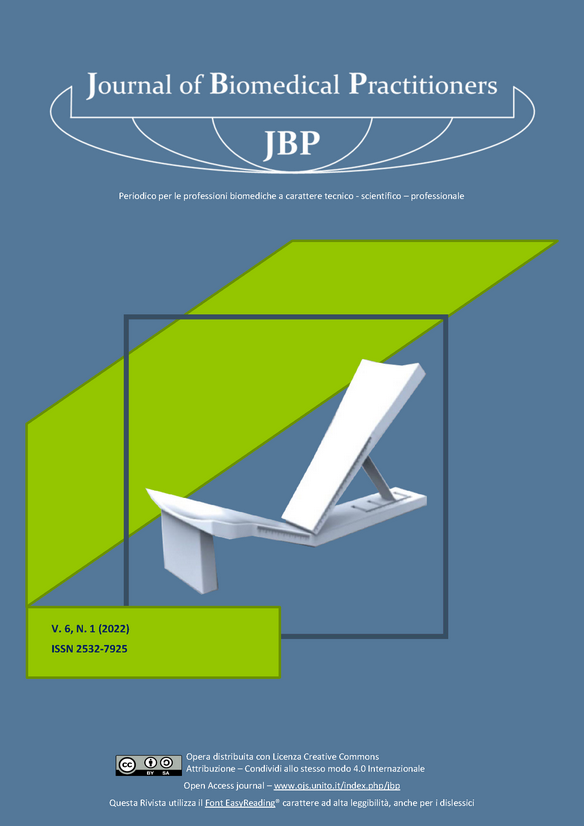Ulnar Goniometer: a simple device for better neurophysiological evaluation of the Motor Conduction Velocity of the Ulnar Nerve.
Contenuto principale dell'articolo
Abstract
OBJECTIVE
The use of the Ulnar Goniometer standardizes the method of detecting the Motor Conduction Velocity (MCV) of the Ulnar nerve by keeping the elbow flexed at a fixed angle, thus enabling an easier and more precise measurement.
MATERIALS AND METHODS
The stimulations were performed by two independent operators. We evaluated 30 participants of both genders with paresthetic symptoms of the upper limbs and 30 healthy and asymptomatic volunteers. Each operator performed the examination without and with the use of the Ulnar Goniometer, detecting the velocity of motor conduction wrist-below elbow and the speed above-elbow (AE) below-elbow (BE). Agreement between the measurements was assessed with intraclass correlation coefficient (ICC).
RESULTS
The repeatability of the measurements between operators was modest without the use of the support (ICC = 0.152) while a good agreement was found when the operators used the support (ICC = 0.499).
DISCUSSION AND CONCLUSIONS
The most obvious results of the study were the reduction of the difference between operators using the Ulnar goniometer, the increase in the repeatability of the measurements and the specificity of the test.
Downloads
Dettagli dell'articolo
Gli autori mantengono i diritti sulla loro opera e cedono alla rivista il diritto di prima pubblicazione dell'opera, contemporaneamente licenziata sotto una Licenza Creative Commons - Attribuzione che permette ad altri di condividere l'opera indicando la paternità intellettuale e la prima pubblicazione su questa rivista.
Riferimenti bibliografici
[2] Granger A, Sardi JP, Iwanaga J, et al. (2017) “Osborne’s Ligament: A Review of its History, Anatomy, and Surgi-cal Importance” Cureus. 9(3): e1080
[3] An TW, Evanoff BA, Boyer MI, Osei DA (2017). “The Prevalence of Cubital Tunnel Syndrome: A Cross-Sectional Study in a U.S. Metropolitan Cohort” J Bone Joint Surg Am. 99(5):408-416
[4] Raeissadat SA, Youseffam P, Bagherzadeh L, et al. (2019). “Electrodiagnostic Findings in 441 Patients with Ul-nar Neuropathy - a Retrospective Study” Orthopedic Research and Reviews. 11;191—198
[5] Ehler E, Ridzoň P, Urban P, Mazanec R, et al. (2013). “Ulnar nerve at the Elbow-normative nerve conduction studies” J Brachial Plex Peripher Nerve Inj. 8:2.
[6] Ufficio italiano Brevetti e Marchi. Disponibile su www. uibm.mise.gov.it
[7] Ubiali E. Elettroneurografia. Testo atlante. Scienza Medica editore. 2016; 230-35.
[8] Landau M, Diaz M.I, Barner K.C, Campbell K.C. (2002). “Changes in nerve conduction velocity across the elbow due to experimental error” Muscle Nerve. 26(6):838-40
[9] Chang C-W, Wang Y-C, and Chu C-H. (2008). “Increased Carrying Angle is a Risk Factor for Nontraumatic Ulnar Neuropathy at the Elbow” Clin Orthop Relat Res.; 466(9): 2190–2195

